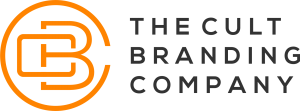This past June, YouTube CEO Neal Mohan stood onstage at Cannes Lions and reminded us that a revolution in storytelling has already happened—we’re living in it. And if you’re a marketing leader, the implications are massive.
“Today, YouTube is the epicenter of culture. Not forgettable fads, but culture with a capital C,” Mohan said.
I’ve spent over two decades helping brands like Apple, Disney, and Coca-Cola build enduring relationships with their customers. And I can tell you—what’s unfolding on YouTube isn’t just about video. It’s about how culture is now co-created, community-powered, and increasingly creator-led.
Let’s talk about what this means for you and your brand.
Creators Are the New Studios. The New Agencies. The New Brands.
Remember when iJustine filmed unboxings in her bedroom? Today, French creator Inoxtag is premiering Everest documentaries in cinemas and pulling 17 million views in under 48 hours—on YouTube.
“Creators are the startups of Hollywood,” Mohan declared.
He’s right. These creators are building teams of screenwriters, producers, animators, and editors. They’re not just personal brands; they’re cultural engines.
So, what if you stopped thinking of creators as “influencers” and started seeing them as your collaborators—your co-architects of emotional relevance?
Community is the New Loyalty
At The Cult Branding Company, we’ve studied how loyalty doesn’t come from repeat purchases—it comes from identity, belonging, and shared meaning. That’s why Harley riders tattoo the brand on their bodies and Apple users flock to MUGs (Mac User Groups). They don’t just use the product—they live the brand.
The same thing is happening on YouTube.
“Fandoms don’t just follow culture, they shape it,” said Mohan.
He pointed to The Amazing Digital Circus, which exploded to over 300 million views. But the fan-generated content? Over 25 billion views. That’s not a marketing funnel—that’s a brand ecosystem.
Shorts, Podcasts, and the Power of the Fan
YouTube Shorts now drives over 200 billion views a day. Podcasts attract 1 billion monthly viewers. And it’s not just passive consumption—fans remix, react, review, and recreate.
This aligns with what we call the Three Signatures of Community:
- Shared consciousness
- Rituals and traditions
- A sense of moral responsibility to each other
When your customers start expressing themselves through your brand—like the Sidemen selling out Wembley Stadium—you’ve gone beyond product. You’ve tapped into collective purpose.
AI Is Here—But It’s the Human Connection That Wins
Google’s DeepMind has now integrated Veo 3 into YouTube Shorts. That means creators can generate video backgrounds, dub in new languages, and reach global audiences faster than ever.
“The possibilities with AI are limitless,” Mohan said. “But what’s even more exciting is how AI is helping creatives behind the scenes.”
From our vantage point, I’d add this: Don’t let AI distract you from the real work—building emotional connections. Use AI to enhance human creativity, not replace it.
My Bet? Emotion Will Outperform Everything Else.
I agree with Mohan’s final prediction:
“Creators will flip formats, blend genres, and push deeper into the mainstream… as brand ambassadors, big business ventures, and visionary storytellers.”
But here’s my take: The brands that understand the emotional needs of their customers, and invite creators and fans to co-own the journey—that’s where the future lives.
If Harley-Davidson could become a global brotherhood of freedom, if Apple could create a tribe of rebels with a cause, if Patagonia could turn activism into a billion-dollar business—you can do it too.
But you’ll need to stop trying to “control the message” and start building a brand collective—a place where customers, creators, and culture-makers converge.
Don’t Just Advertise—Belong.
We’re entering an era where traditional campaigns are replaced by movements. Where belonging beats broadcasting. Where your customer isn’t just your buyer—they’re your media channel, your storyteller, and your co-pilot.
So if you’re a CMO or brand leader trying to future-proof your strategy, take this to heart:
It’s not about attention anymore. It’s about connection.
And that’s where the next 20 years of branding will be won.
—BJ
